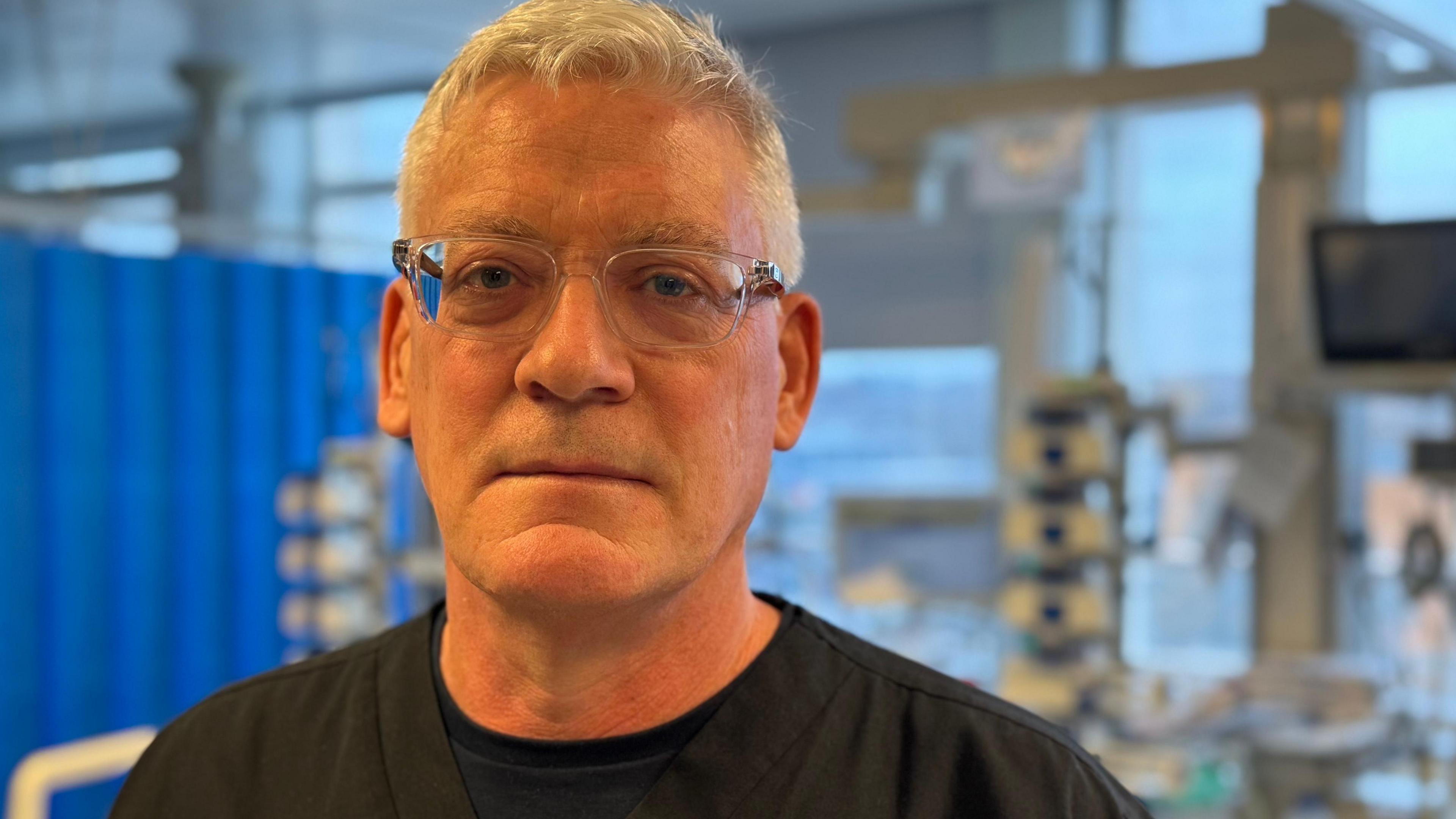NHS Wales carbon emissions up by 20% since 2019

- Published
Total carbon emissions from NHS Wales have risen by 20% since 2018-19, despite targets to reduce them by 16%.
NHS Wales has blamed the increased rise in emissions on its suppliers, and vowed to work with outside firms "to minimise environmental impact".
Over the same period, emissions outside the NHS supply chain - in areas such as buildings and transport - decreased by nearly a quarter, which the NHS has hailed as "significant progress".
The NHS has a duty, under Welsh government criteria, to reach net zero by 2050, but a report by the Climate Change Committee in 2023 found Wales was falling behind on actions needed to fight climate change.
NHS Wales said it was revitalising its decarbonisation plan in order to set out a "clear roadmap" to reach the stated target.
One significant initiative has seen the intensive care unit (ICU) at University Hospital Wales in Cardiff cut plastic waste by two tonnes every year over the past five years.
Dr Jack Parry-Jones, a consultant in adult intensive care medicine, said: "We are focusing on actions, not policy".
"The actions we want are to reduce waste, to reduce energy consumption."
William puts flood-hit Welsh town in COP spotlight
- Published7 November
Six officers face misconduct hearing over triple death crash
- Published7 November
As part of sustainable practices introduced since 2019, the Green ICU Team, at Cardiff and Vale health board, has reduced the number of non-sterile plastic gloves in critical care by nearly half a million a year.
Additionally, patients' plastic water bottles are recycled, tap water is used in place of sterile water, and energy saving measures such as installing LED lighting and switching machines off when they are fully charged have been introduced - with the health board stating it had saved thousands of pounds.
Yet, despite the ICU's efforts, overall emissions by NHS Wales have risen by a fifth since 2018-19.
Supply chain emissions rose by 44% over the given period, while non-supply chain emissions dropped by 23%.
Total emissions for 2024 include 77% emissions linked to the NHS supply chain, 15% associated with its buildings, and 6% from transport, with waste and medical gases accounting for the remainder.

ICU consultant Dr Jack Parry-Jones wants to cut his hospital's waste and energy use
Sustainability consultant Mari Arthur said the NHS has a "huge amount of purchasing power" and should be able to demand lower emissions from its suppliers.
Single-use items, such as plastic aprons, can have a large carbon footprint, she said.
"That apron might have been manufactured in Asia, for example, where most single-use PPE is manufactured.
"You've got the embedded carbon of fossil fuels in the manufacturing process, [and] the transportation of bringing something across the world - so, maybe, months' worth of carbon being built up for that one item to be used for a few minutes - sometimes a few seconds - and then discarded, and then burnt, or gone to landfill."
As part of its new decarbonisation plan, NHS Wales vowed to "work with suppliers to minimise environmental impact".
It will also look to improve energy efficiency and the use of renewables, support more sustainable travel, and work to reduce waste.
Cabinet secretary for Health and Social Care Jeremy Miles said: "We all have a part to play in addressing the climate emergency.
"The NHS in Wales can play its part by taking simple steps, such as reducing waste, saving energy and working as sustainably as possible, while focusing on delivering high-quality care."
Related topics
- Published7 November

- Published7 November

- Published7 November
